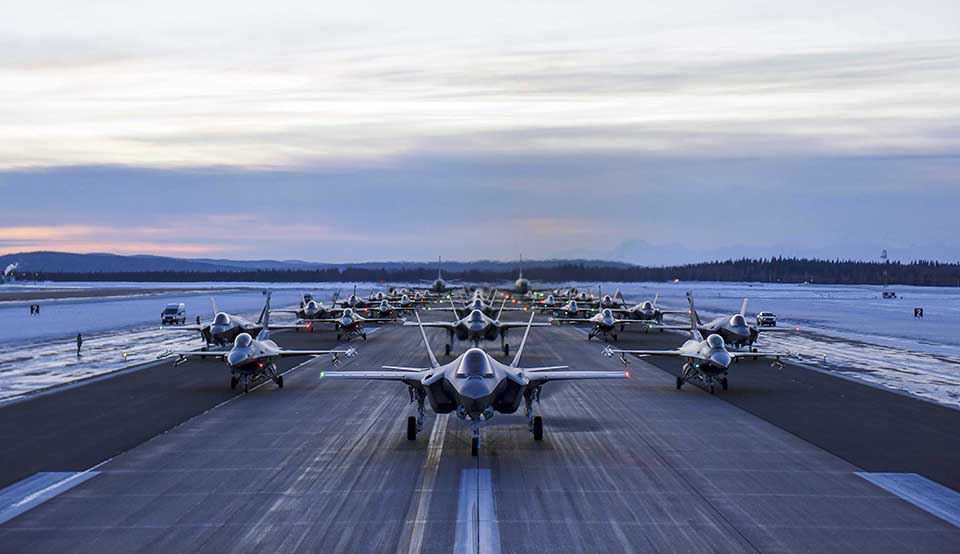
Meeting Energy Challenges Through Nuclear Microreactors and Data Technologies
By Nancy Balkus, P.E., SES, M.SAME and Ashley Sadorra, M.SAME
To address evolving threats and demands on installation energy security, the Department of the Air Force is pursuing pilot projects exploring advanced nuclear microreactors, powered by cutting-edge data tools, to increase readiness and resiliency.
Resilient, reliable, and safe energy is essential to the mission of the Department of the Air Force (DAF)—and always will be. Because our installations function as power projection platforms, we must have continuous access to energy sources to ensure readiness. However, evolving global security landscapes are continuing to introduce complex new challenges that threaten our ability to complete the mission and to obtain the critical resources we need to deter adversaries, and, if required, to win in a conflict.
We fight directly from our bases. As power demands surge around the world, our infrastructure and energy systems increasingly are strained. At times, we have had to deftly implement creative solutions to meet demand.
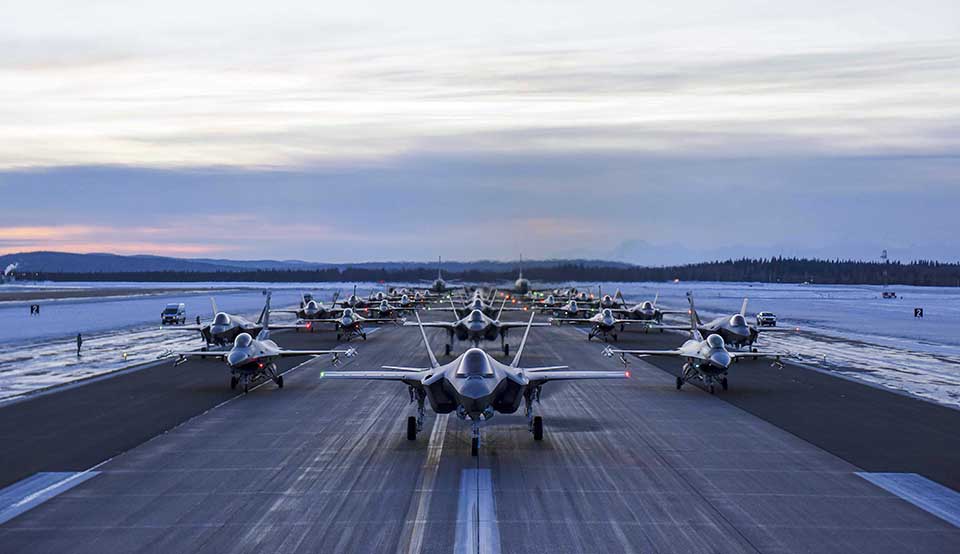
As DAF looks to the future, we are focused on delivering more efficient, agile, and cost-effective energy resilience that is tailored to each installation’s unique needs while improving energy security and reliability. We are working with industry and government partners as well as organizations at federal, state, and local levels to utilize the latest technologies and processes that not only prioritize mission capability but reduce costs and improve operational readiness. Additionally, we are diversifying our portfolio of alternative energy solutions and addressing aging infrastructure to increase resiliency and readiness at our bases and the local communities they coexist with around the world.
Central to our approach is comprehensive, site-specific data collection and analysis to inform decisions at our installations. We are integrating data management frameworks and technology platforms to streamline regulatory and acquisitions processes so we can ensure that our solutions are well-informed and address community needs. These efforts are not just about meeting today’s needs—they are laying the groundwork for a new era of energy resilience, driven by data.
Advancing Nuclear
Modern PA and notification systems offer quality-of-life functionalities beyond what traditional analog systems can provide, particularly in environments with high ambient noise, changing acoustics, and large open areas. Newer systems incorporate automated volume controls. These can adjust announcements based on ambient noise levels, improving message clarity while reducing noise in quieter areas. This feature helps ensure that announcements are noticeable without being disruptive. These same systems can measure the impedance of the wiring to their speakers (and the speakers themselves) to detect tampering as well as poor performance, accelerating maintenance.
New supplemental technologies can even support crowd control, which may be particularly important on facilities overseas. Sound generation systems can produce particularly loud and unpleasant sounds that drive crowds away from secure areas. This provides military bases with a valuable non-lethal means of crowd control.
Modern systems enable facilities to introduce multi-layered notification methods, including public announcements, pagers, and integration with handheld radios. This redundancy ensures that messages reach all personnel, even if primary communication channels are compromised.
Overcoming Challenges
As energy complexities grow, advanced nuclear technologies are emerging as an intriguing answer to meet increasing energy demand, particularly for their ability to provide both electricity and thermal energy. Advanced nuclear technologies can deliver unprecedented access and reliability to austere locations without a grid connection and ensure mission continuity in case of a power disruption.
Microreactors (not to be confused with small modular reactors) are relatively small nuclear reactors that can produce up to 20-MW of clean energy. They can operate independently from the commercial grid. Equipped with built-in safety features that self-adjust to prevent overheating, microreactors can withstand evolving natural and man-made challenges, such as extreme weather and cybersecurity threats. Most microreactors are small enough to be safely hauled by tractor-trailer and can have an operating area of less than 1-acre, depending on site requirements.
This combination of reliability and operational flexibility makes them a promising power source for domestic military installations critical to national security.
We are working with industry and government partners as well as organizations at federal, state, and local levels to utilize the latest technologies and processes that not only prioritize mission capability but reduce costs and improve operational readiness.
Partnership in Action. While many bases depend on the power grid for operations, they also face resiliency challenges like those confronting the broader Air Force community. To mitigate these threats, DAF is prioritizing partnerships with regional stakeholders, including state and local governments, critical infrastructure owners, and other large consumers to integrate these advanced technologies into operations.
- At Eielson AFB in Alaska, the department has partnered with Defense Logistics Agency-Energy, the Nuclear Regulatory Commission, and Department of Energy to site a federally licensed microreactor on a defense installation. This first-of-a-kind pilot is exploring critical acquisition, environmental, and safety requirements and processes, as well as community and tribal engagement best practices, which will serve as a pathfinder for future energy projects of its type across the Department of Defense.
- At Hill AFB in Utah, we are developing use-case scenarios utilizing modeling and simulation for a 1-MW portable microreactor for military applications. Awarded through Small Business Innovation Research Program, the project focuses on rapid deployment capabilities, enhanced fuel efficiency, and robust safety features; this could make the microreactor ideal for off-grid and austere environments.

Powered By Data
Deploying advanced nuclear energy systems requires cutting-edge technology, reliable data, and precise decision-making.
eJARVIS is a web-based application that centralizes data from more than a dozen DAF systems, providing users with real-time dashboards, automated workflows, and a secure AI interface.
Because first-of-a-kind applications require stringent environmental and safety requirements, all processes and milestones to develop advanced nuclear projects must meet internal DAF policies, in addition to state and host nation regulatory requirements, federal laws, deployment timelines, and mission and location resilience requirements. The department is now creating the tools and frameworks to ensure these efforts succeed.
At the center of this initiative is a nuclear siting framework being developed under the DARC BLUES (DAF Advanced Reactor Criteria and Baseline Understanding of Enterprise Scalability), with an early version set to debut in 2026 to test specific concepts. This system will integrate critical site-specific data and automate key analyses; that will help decision-makers navigate technology and acquisition options to ensure advanced nuclear energy is the most viable solution before obtaining authority to move forward with early regulatory permitting and licensing activities. We established a target timeline of seven years for all projects—from the initiation of a contract or agreement to full operational power generation. While our current focus remains on stationary reactors for fixed installations, we are exploring how this technology could support expeditionary missions and emergency responses. By streamlining regulatory and governance processes, the framework will serve as a safeguard for every advanced nuclear energy project, ensuring compliance and operational excellence from the start.
Beyond utility bills and load profiles, DAF requires an analysis of technology and site alternatives and detailed environmental data to assess risks from natural hazards to ensure regulatory compliance. Real-time monitoring will track the operational health and security of advanced nuclear energy power facilities, while outage data will inform strategies for delivering reliable energy, both on and off base. Together, these insights will shape a resilient, future-ready energy infrastructure that meets the demands of national defense.
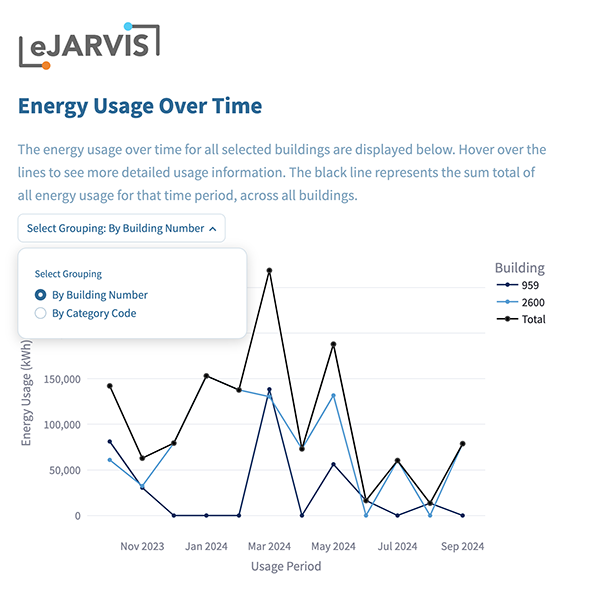
Rendering courtesy Department of the Air Force.
Supporting this vision is DAF’s Energy Data and Analytics Working Group, which is tasked with modernizing how energy data is managed and used. By unifying fragmented systems and addressing policy gaps, this group is creating a foundation for faster and smarter decision-making.
Integration Potential. The potential of an integrated data platform has been demonstrated through the eJARVIS pilot effort. eJARVIS is a web-based application that centralizes data from more than a dozen DAF systems, providing users with real-time dashboards, automated workflows, and a secure AI interface. An ability to visualize data in real time ensures the safe and efficient implementation of these technologies, making eJARVIS indispensable for successful nuclear energy deployment and both strategic and tactical decision-making. The platform will play a crucial role in delivering the data necessary for tasks like site assessments and regulatory compliance as well.
Recently, eJARVIS celebrated achieving Authority to Operate at Impact Level 4 through Platform One. This marked a significant milestone in its role as a cornerstone of DAF’s digital transformation. We are continuing to expand its capabilities including enhanced data collection through automated meters and system upgrades that will support AI applications.
Securing the Future
DAF is integrating advanced nuclear energy through digital transformation to enhance energy resilience and security for national defense. By leveraging breakthrough technologies, data-driven strategies, and partnerships, we are addressing the critical challenges of powering installations amid evolving threats and rising demands.
By combining advanced analytics, secure monitoring, and innovative data tools, we can tackle complex energy challenges head-on and be better prepared to withstand both natural and man-made risks to our systems, which continue to increase in frequency and severity. Importantly, these efforts do not just prepare DAF and our installations for the energy systems of tomorrow—they ensure we are mission-ready today.
Nancy Balkus, P.E., SES, M.SAME, is Deputy Assistant Secretary of the Air Force (Infrastructure, Energy & Environment); nancy.balkus@us.af.mil.
Ashley Sadorra, M.SAME, is Manager, Air Force ERS Portfolio, Office of the Deputy Assistant Secretary of the Air Force (Infrastructure, Energy & Environment); ashley.sadorra.1.ctr@us.af.mil.
Published in the March – April 2025 issue of The Military Engineer

Check Out Related Articles From TME
-
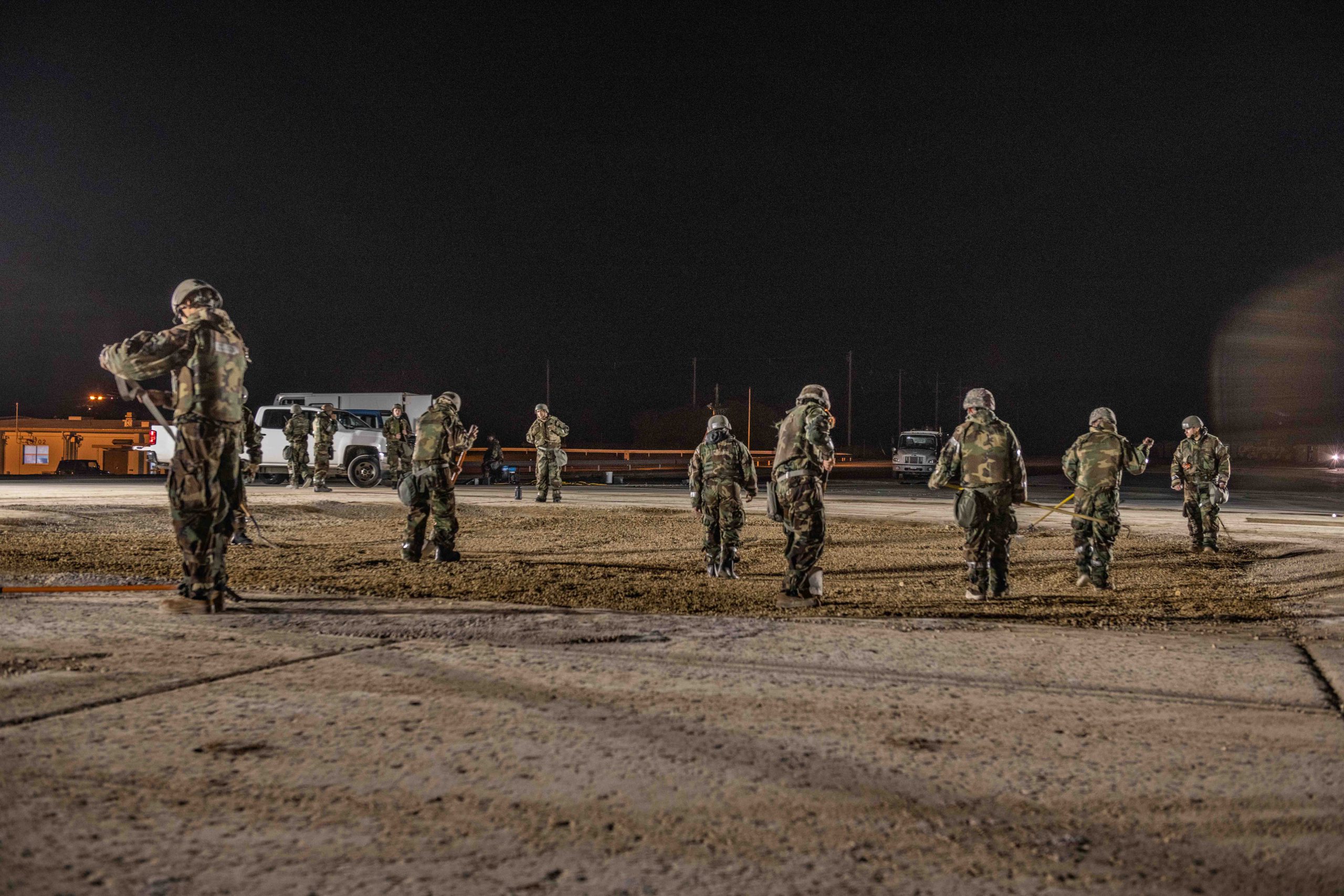
Managing Base Infrastructure Risk in an Era of Strategic Competition
Because air and space power originate from physical installations, the Department of the Air Force is addressing infrastructure risk to ensure unquestionable success in the current environment of strategic competition. -
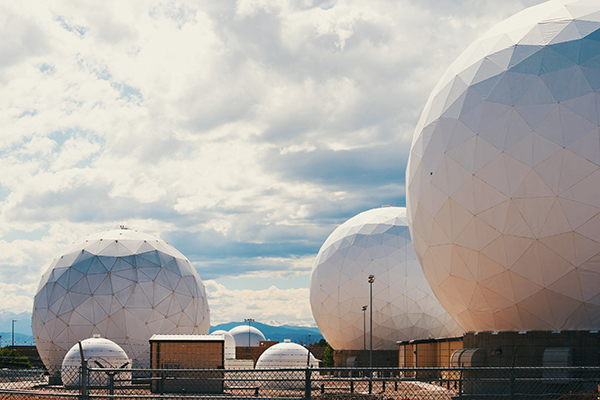
Quantifying Risk Through Probabilistic Risk Assessments
Research conducted at the Air Force Institute of Technology tested the feasibility of using existing facility condition and work task data to quantify the risk of mission failure due to infrastructure limitations and subsequently use the assessment to inform future funding decisions. -

Strengthening Installation Energy Resilience Through a Community of Practice
The Military Energy Resilience Catalyst strengthens installation energy resilience by providing opportunities for energy practitioners to develop professionally and connect with experts, senior leaders, and colleagues. -
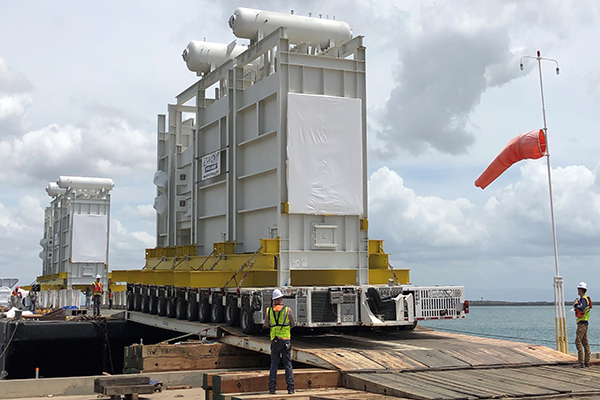
Achieving Energy Self-Sufficiency at Guantanamo Bay
Naval Station Guantanamo Bay achieved energy self-sufficiency through a record-setting energy savings performance contract that enabled construction of a state-of-the-art combined cycle power plant. -

Fulfilling the Mission
Rear Adm. Dean VanderLey, CEC, USN, Commander, Naval Facilities Engineering Systems Command, sits down with TME to discuss the Department of the Navy’s Systems Command for shore facilities and expeditionary equipment, Naval Facilities Engineering Systems Command (NAVFAC) and its varied responsibility that directly support warfighter lethality. -
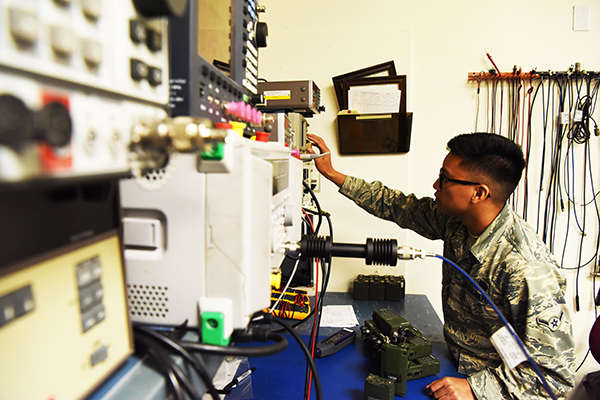
Embracing Modern Mass Communications Systems
Modern mass communication systems utilizing Internet Protocol-based adoption offer many benefits over legacy analog systems for military bases, including critical issues of security, functionality, and compliance to meet evolving expectations, standards, and safety requirements.
